This ultimate guide on rose farming will help you to get complete details on climate, soil, fertilizers, irrigation, propagation, etc. Learning about these important factors will help you to decide and perform better practices to increase rose crop yield.
Rose is one of the most popular flowering plant in floriculture industry. And only by practicing cultivation of rose in 1 acre of land you can earn up to 70,000 Indian rupees or around $ 1000. But you can achieve this by following good farm practices.
And in this article I am going to tell you everything that can make you a successful rose farmer. So keep reading till the end and do not miss any of these points.
Table of Contents
Introduction Of Rose
Rose is a perennial woody flowering plant and there are over 30,000 rose cultivars in the market. Cultivars can be various sizes and shape with flower colour mainly ranging from red, yellow to white. Depending on cultivars they can be miniature roses to climbers that can grow up to 7 metres tall.
Because of their extraordinary fragrance, beauty and medicinal uses roses are cultivated as cut flower crops. Industrialist use rose for preparation of various products such as essential oils, flavouring agents, tea, Gulkand, rose syrup, jam etc. Hence there is always a high demand for roses in the market.
Origin Of Rose
Researchers believes that rose originated in Central Asia. According to fossil evidence it is clear that roses are 35 Million years old. Hence they originated even before the evolution of humans.
Area & Production
According to the data, Netherlands is the largest exporter of rose in the world. It accounts for about 60% of the rose export in the international market.
Rose Farming Guide
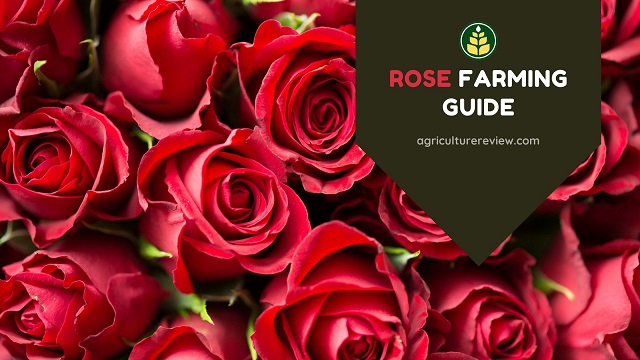
Soil Requirements
Rose crop loves to grow on well drained, fertile loamy soil that have good moisture holding capacity. Agriculturist have reported that rose grow better in soils having pH range of 6 to 6.5.
Soil with pH level more than 7.5 is not suitable for farming of rose. As rose crop will be unable to uptake phosphorus, manganese, and iron in soil with higher pH than 7.5.
Climate & Temperature
Cultivating rose crop at higher elevation, i.e. 1500 metres and above is beneficial. However you can also cultivate rose in plains where the climate is relatively cool. Temperature and light have a great impact on growth and development of rose crop.
The ideal temperature range for roses is between 15 to 25o Celsius. If the daylength is less than 12 hours then it can slow down the growth of rose crop. Hence daylength of 12 hours or above is suitable for cultivation of roses. But less than that can slow down the growth.
Moreover avoid cultivating rose where there is high relative humidity. Because of high relative humidity your rose crop can become prone to fungal diseases.
Rose Cultivars
Agriculturist mainly divides roses into three main categories:
- Wild Roses: They are also called species roses that have five petals flower and can be available in various colour. They branch rapidly and even keep flowering during early winters. Example: Rosa rugosae, Rosa woodsii, Rosa virginiana, etc.
- Old Garden Roses: These roses are easy to grow and are disease resistant. Old garden roses have alluring scent and beauty and they can also survive winters easily. Example: Moss Rose, Noisette, Centifolia, etc.
- Modern Garden Roses: They are generally hybrid roses. They are prepared by cross breeding of hybrid tea rose and primrose. Example: Hybrid Tea Roses, Floribunda Roses, Centifolia Roses, etc.
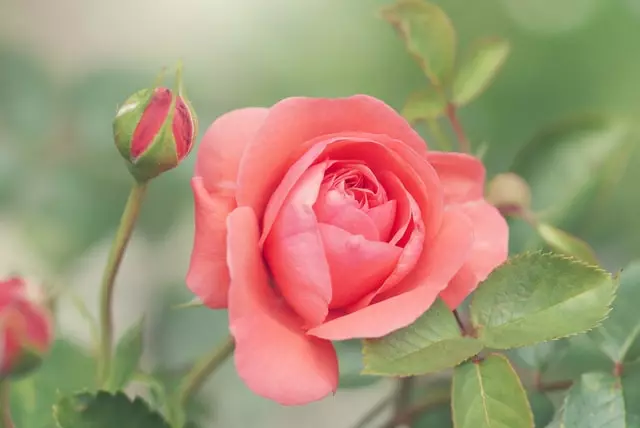
Commercial crop roses are mainly of 4 types:
- Floribunda Rose: These roses have shorter branches and small sized flowers. But yield of floribunda roses is generally higher than other type of roses. They are result of cross between Hybrid tea and Polyanthus roses.
- Hybrid Tea Rose: Generally branches of hybrid rose are longer and flowers are big. If you want to get higher yield they hybrid tea roses can be a good choice.
- Grandiflora Rose: These type of rose are developed from cross between hybrid tea and floribunda roses. Flower size of grandiflora rose is larger than floribunda roses.
- Polyanthus Rose: This group of rose is famous for producing clusters of small flowers. They are excellent rose for edging, pots, and bedding.
Propagation Methods
You can propagate rose by seeds, vegetative methods like budding, grafting, layering and cutting, or micro-propagation.
From Seeds
Breeders generally adopt this method to develop new cultivars or hybrids. However, do not prefer this method for commercial propagation of roses as seed setting is poor in roses. Rose seed needs stratification for germination.
From Budding & Grafting
Budding is the most popular method of propagation. Generally Shield or T-budding is used to propagate rose from budding. Budding is generally practiced 5 to 7 centimetres above the ground under ideal temperature range of 10 to 25o Celsius.
READ MORE: HOW TO GROW ROSE FROM CUTTINGS
READ MORE: MARIGOLD FARMING GUIDE FOR OPTIMUM YIELD

Field Preparation
Ploughing the soil is necessary to bring the soil to a fine tilth. Practice ploughing and hoeing operation 4 to 5 times to make the soil ready for plantation.
Prepare raised beds of dimensions 30 centimetres height and 100 centimetres length. Keep the width of path around 30 to 40 centimetres. Row planting with spacing of 30×15 centimetres is preferred.
Keep the field exposed under sunrays for at least 15 days before plantation of roses.
For plantation of rose, prepare pits of adequate sizes of 45 to 60 centimetres depth. Add 2 tonnes of well decomposed Farm Yard Manure, Bone meal, Leaf Manure, 25 Kilograms of Urea, and 2 Kilograms of superphosphate in these pits after mixing them.
In one acre of land you can plant up to 7000 rose plants. You can plant one year old budded rose plants in July to August. Practice planting of rose during evening time for best results.
Irrigation
Irrigate immediately after plantation of roses. Keep irrigating daily till the establishment of rose crop. Once they get established then you can irrigate once in a week during summer season. However during winters depending on moisture of soil you can irrigate once in every two weeks.
Rose plants require approximately 1 litre of water per plant.
Drip irrigation is the most preferred method of irrigation for cultivation rose. Install a single drip line between two row plants for irrigating rose crop.
Do not adopt sprinkler irrigation for raising rose crop as it can cause fungal infections in rose plants. But during hot summers you can use sprinklers to decrease the temperature under controlled conditions.
Fertilizers
If you are using drip irrigation system then you can adopt fertigation for adequate application of fertilizers. However I will suggest to get your soil tested for knowing accurate dozes of fertilizers required for your rose farm.
Once after every 3 months or after pruning apply 10 Kilograms of Farm Yard Manure & NPK in the ratio of 8:8:16 for each rose plant. Along with this you can also add jeevamrut to increase growth of the plant. You should also spray 250ppm of GA3 (30 days after pruning) to promote flowering in rose plants.
At the time of plantation, apply 2 Kilograms each of Azospirillum and Phosphobacteria per hectare. Micronutrients are essential for getting healthy leaves & bright coloured flowers. Therefore, spray 0.2% micronutrient mixture containing 20 grams of MnSO4 + 15 grams of MgSO4 + 10 grams of FeSO4 + 5 grams of Boron after every 30 days.
To increase flowering in the plant, spray 1% NPK (0:0:50) solution during active flowering season after every 20 days.
Pest & Diseases Of Rose
Rose crop can get affected from various pests and diseases that can reduce flower quality and plant growth. Controlling them well in time is a necessary step. These tables given below will guide you in controlling pest and diseases of rose plant.
Rose Plant Disease and Control
| Diseases | Control Measures |
|---|---|
| Die Back | Remove infected portion, apply Bordeaux paste on cut ends and spray Copper oxychloride (3 grams per litre of water). |
| Black Spot | Spray Carbendazim (1 gram per litre of water) at fortnightly intervals. |
| Powdery Mildew | Remove infected portion and practice dusting with 80% Sulphur. |
| Stem Blight | Regular spray with Captaf @ 2000ppm. |
| Rust | Spray with Zineb @ 2000ppm at 15 days interval. |
| Alternaria Leaf Spot | Spray Captaf or Zineb @ 2000ppm at 7 days interval. |
| Rose Wilt | Control Aphids that transmit the disease. |
Pest of Rose and Control
| Pests | Control Measures |
|---|---|
| Aphids | Spray 0.1% Malathion |
| Thrips | Spray 0.1% Rogor |
| Red Scale | Spray 0.25% Parathion |
| Chafer Beetles | Spray Monocrotophos (1m in 1 litre water) |
| White Grub | Spray Phosalone 35 EC (2 ml in 1 litre water) |
Harvesting
Harvest the shoots at the tight bud stage when one or two petals start unfolding. Bent-neck can occur if you harvest roses too early. Start harvesting only during peak demand in the market to avoid post harvest losses.
Stage of harvest can vary depending on variety, market distance and customer satisfaction. Practice harvesting during early morning when temperature remains relatively cooler.
Yield
Yield of rose vary among cultivars. Hybrid tea roses can yield about 80 stems per plant per year, while Floribundas can yield around 90 stems per plant per year.
Post Harvest Management Of Rose
Following post harvest technologies is very important to maintain market desired quality. You should follow these points to avoid rose crop loss after harvesting.
Pre Cooling: After harvesting, keep the rose stems portion in the bucket filled with water as soon as possible. Then only you should store cut flower of rose in cold storage rooms at 3 to 5o Celsius.
Pulsing In Rose: It helps in improving shelf life, colour, & size of the flower. Chemical solutions containing sugar and germicides are applied on stems to get absorbed at 20 to 25o Celsius and light intensity of 2000 lux. You can use 3% sucrose for 18 hours at 20o Celsius to improve post harvest quality of rose.
Grading
Grading of cut flower of rose is important for better marketing. You should look upon these parameters for good quality cut roses.
- Stem should be strong enough to hold flowers upright.
- You should not mix flower with different stem length.
- Size of the flower should match with the ideal size of the variety.
- It should be free from any kind of injury, diseases, or pests.
If you are looking for exporting, then maintain stem size of 90 to 120 centimetres.
Rose Nurseries
If you are willing to buy seedlings to set up your rose farm, then you can approach these nurseries to buy rose plants or seedlings.
- Rose Farm & Nursery: Sy. No. 56/2 C, Kethohalli, Near Dodda Aladamara Chunchakuppe Post, Bengaluru-562130, Karnataka, India.
Contact Number: 08048372322
- Hindustan Success Agro: Chhindwara, Madhya Pradesh, India.
Contact Number: 08047634772
- Shri Haridwar Agronomics: Rustampur, Gorakhpur, Uttar Pradesh, India.
Contact Number: 08046068169
- Boston City Florist: Charles River on the Boston University campus at 714 Commonwealth Avenue, Boston, United States.
Contact Number: 1-800-292-7673
- Regan Nursery: Fremont, CA, United States.
Contact Number: +1-510-797-3222
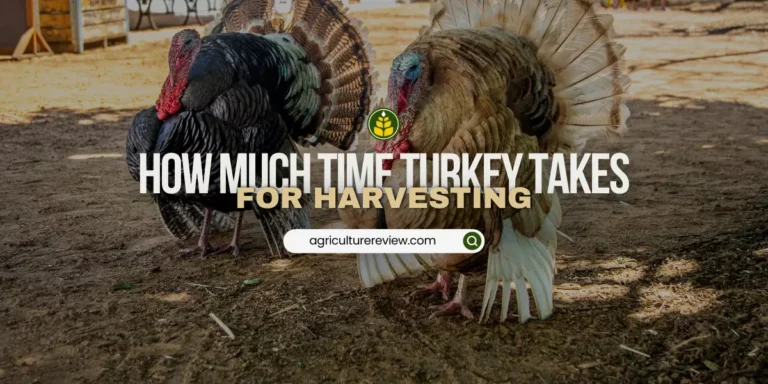

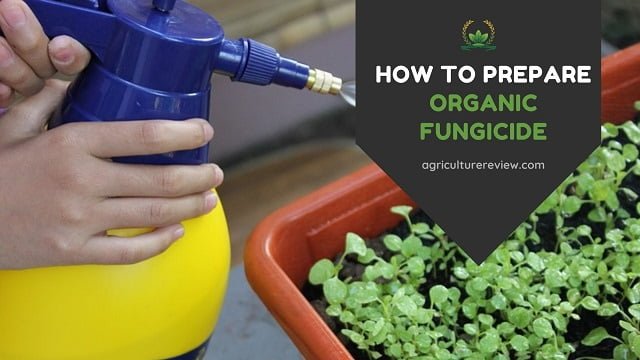

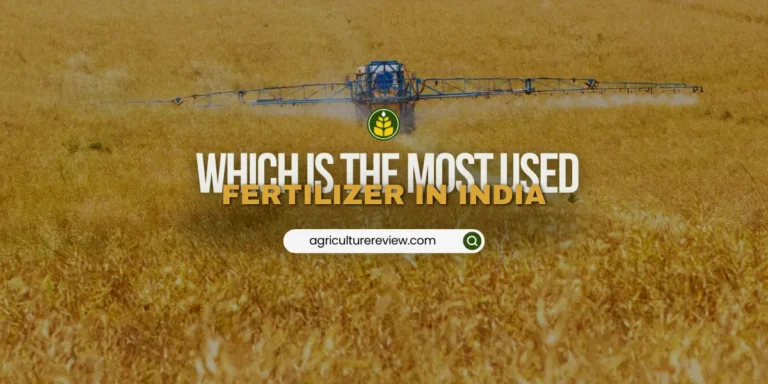
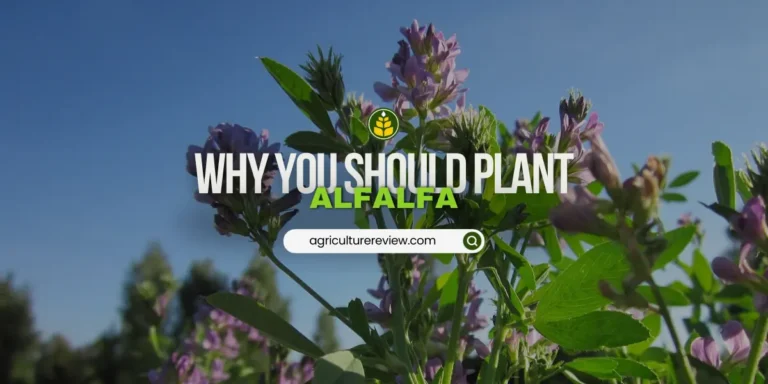
Good article
Thanks!
Thanks ❤🌹🙏 Abhishek Making my dreams alive I allways apure to cultivate Roses in My Uttrakhand fields that people are leaving slowly by migration of people to plains. Wanted my next venture near my heart If we could generate this way for the local entrepreneurs . Thanks again
Welcome!
Good writeup! For farmers, if you could specify fertilizers, their frequency n dosage will be a lot beneficial. Thank you
Welcome & Thanks for your positive feedback, I have updated fertilizers details to suit your requirements.
If you need more details then, kindly connect with Agriculture Review on Facebook or Instagram.
I hope this will help!
Thanks for sharing the information. It would be a pleasure to know the details of nurseries providing best and variety of rose sapling. With best wishes.
Welcome! As per your query I have added list of some of the top rated & trusted rose nurseries. You can connect with them as per your concerns.
I hope this will help!